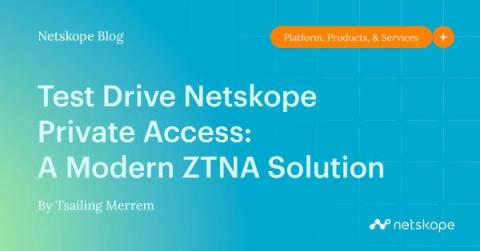Test Drive Netskope Private Access: A Modern ZTNA Solution
We are pleased to announce that Netskope Private Access (NPA) is now available to test drive, meaning you can experience a truly modern zero trust network access (ZTNA) solution firsthand with no commitment and no software to download or install. Selecting and implementing the right ZTNA solution is a crucial part of the SASE journey, and our goal is to make your process of evaluating Netskope Private Access as easy as possible.





